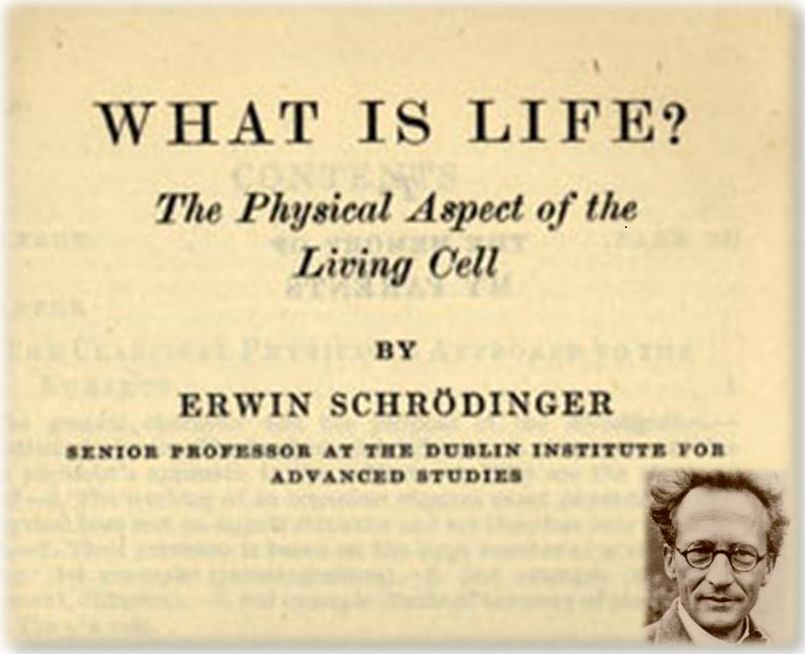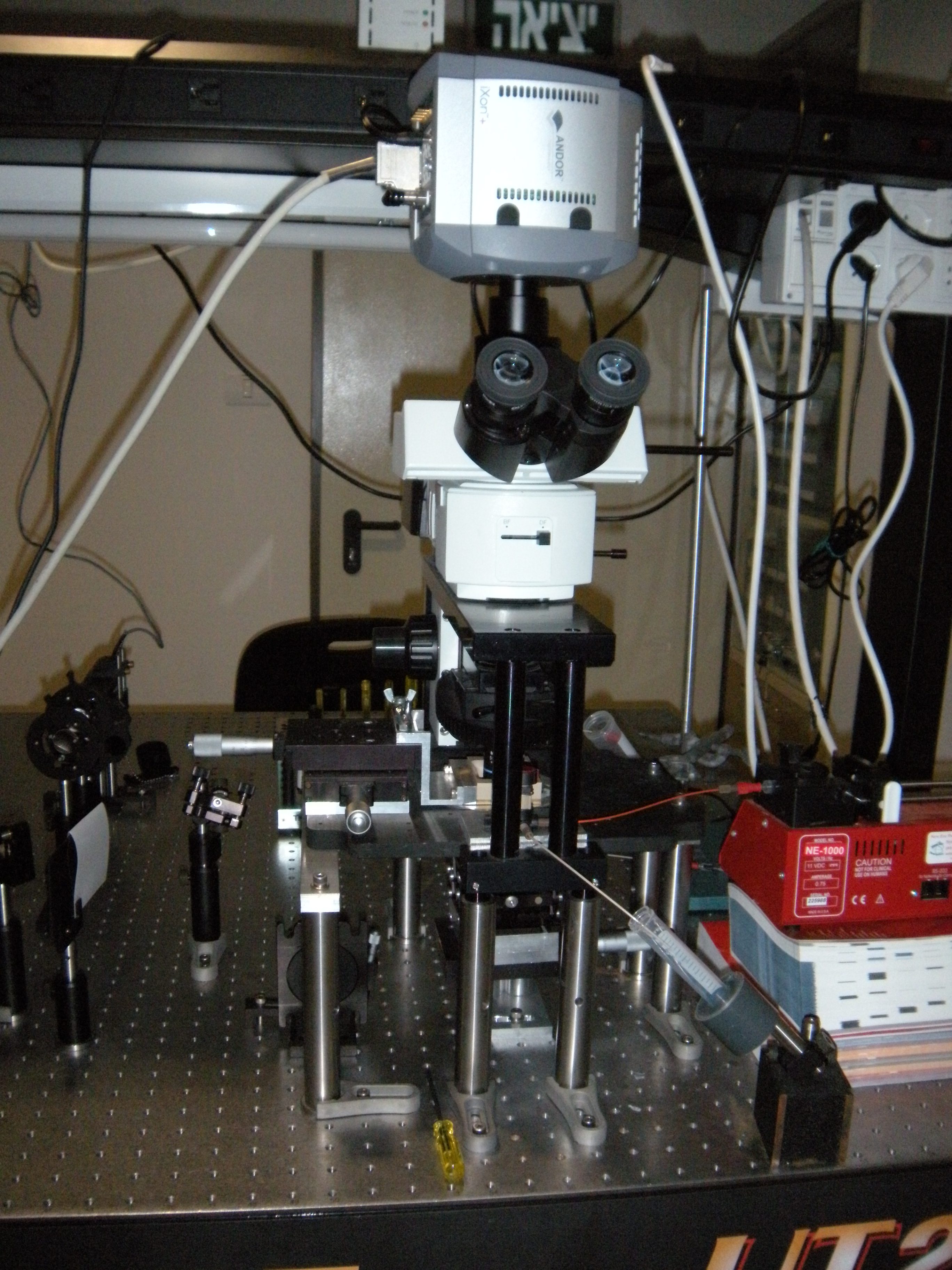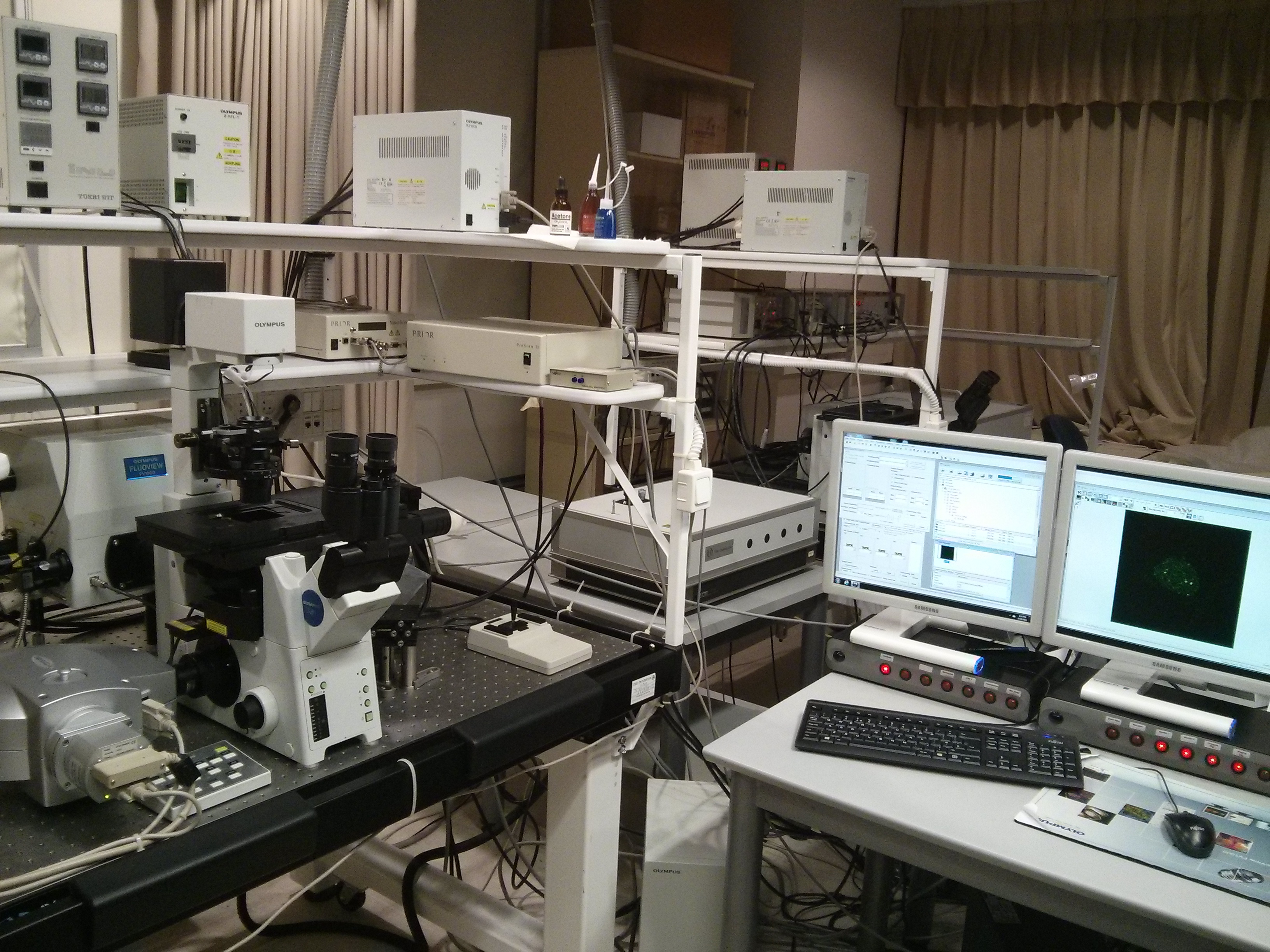Studying the Physics of Biological Systems – Bio – Nano – Photonics
What is biophysics?
Schrödinger touched a fascinating question about the physical nature of life in his book ‘What is Life? The Physical Aspect of the Living Cell‘:
“The question is: How can the events in space and time which take place within the spatial boundary of a living organism be accounted for by physics and chemistry?”
The attempt to answer this question still continues to date with great success. Biophysics is an interdisciplinary science that tries to explain biological phenomena with physical models and to develop novel physical tools for biological studies. By studying biological systems with this multidisciplinary approach, new insights can be achieved. In addition to the exciting work, new discoveries will surely lead to improved human welfare.
Research topics:
[tabs]
[tab title=”Single-molecules”]
 |
Tethered particle motion (TPM) is one of our single-molecule experimental techniques, for in-vitro studies. Some of our TPM projects: |
[/tab]
[tab title=”in-vivo studies”]

The confocal microscope gives better resolution than standard microscope, but the real advantage is the ability to capture 3-dimensional images of living cells. |
Among the projects that use the confocal microscope: |
[/tab]
[tab title=”Protein dynamics”]
 |
The PicoQuant setup has the capability of measuring the fluorescence life time of single molecules. This can be used for experimental methods such as FRET, FLIM and FCS. The PicoQuant setup is serving us for: |
[/tab]
[/tabs]
Yuval Garini’s lab.
This video is part of the APS video about the physics department at Bar-Ilan university.